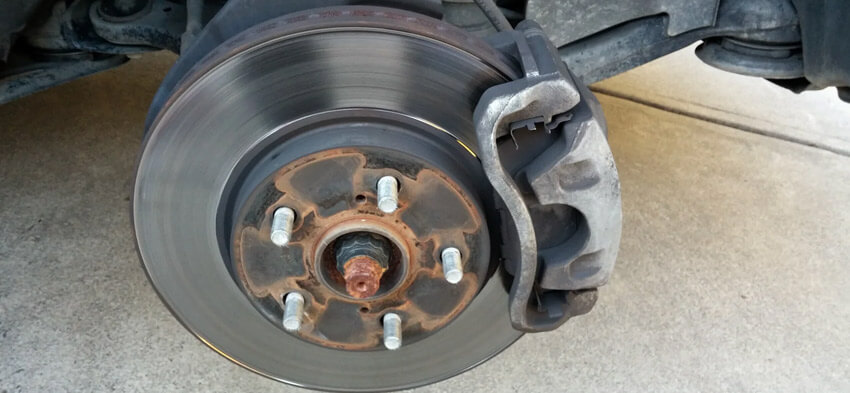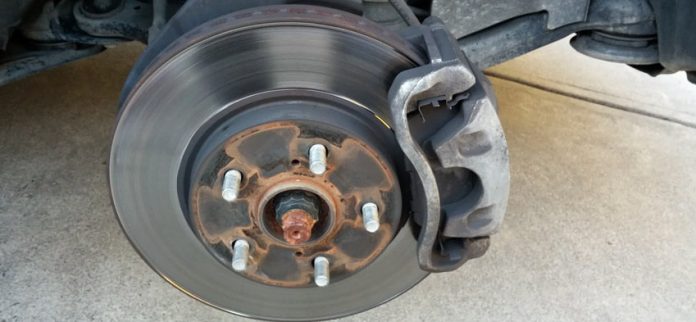
The vast majority of owners of modern foreign cars do not even have an idea about the symptoms and signs of disappearing brakes, and this only speaks of the high reliability of a modern car – God bless all automotive engineers on earth. But what to do if the brakes suddenly, really, unexpectedly disappeared? Are there techniques for driving a car without brakes? Yes, there are. But we will not start with this, but with the very initial signs and primary symptoms of their disappearance.
Symptoms
In order to prevent this from happening, developers have long come up with multi-circuit braking systems, and various electronic assistants in the form of sensors and controllers, and much more that we, motorists, do not need to know about. For this purpose, there are scheduled maintenance, where servicemen and mechanics see everything themselves and know how much money we need to take out in order to be healthy and stay alive until old age. The primary signs of faulty brakes include: low brake fluid level in the measuring tank, critical loss of the main properties of this fluid, fatal wear of brake pads, and so on. This is what mechanics monitor when inspecting and servicing your car at a service station. But there are a number of signs that need to be monitored constantly, and not when the brake pedal is already going to the floor or “becomes a stake”, and the car still does not stop.
1 Brake fluid level in the reservoir. If it is below the Minimum mark, then there is nothing to worry about: the brake pads wear out, the gaps between the pads and brake discs increase (and are “selected” by special mechanisms) and, as a result, the fluid in the reservoir “leaves”. But when the worn pads are replaced with new ones, the wheel brake cylinders return to their original position, and the fluid level rises. In a modern car, you should not top up the brake fluid – this is a mistake of a novice car owner.
2 Replacing brake pads. Modern cars have special spring-signaling devices that start to squeal unpleasantly when braking. With this squealing, they inform everyone around that the mechanics at the last maintenance strongly recommended that the owner of this car change the worn-out pads, but the stingy car owner rejected these recommendations. And it’s still good if the signaling devices whistled and squealed, and not the iron pads creaked on the brake disc. So listen to your mechanic.
3 Brake discs. Together with the linings on the brake shoes, the brake discs themselves wear out, and if your auto mechanic feels a critically high flange with his finger, and invites you to also feel the critical depth of wear of the brake disc, then do not grind your teeth and do not chew your lips, but take out money for new discs or – for their turning. And the process of premature death of brake discs is also favored by high-speed driving (and extreme braking) in damp and rainy weather: a hot disc can simply crack, having fallen into a cold puddle; athletes are well aware of this. And the symptoms of a “dying” brake disc are the following: the brake pedal rattles, and sometimes vibrates under your foot in time with the vibrations of the entire car. This means that the disc is bent, warped, cracked or unevenly worn. In any case, such a disc is subject to replacement. And discs are changed only in pairs.
4 Replacing the brake fluid. This procedure is also prescribed in the service book, but few people know about it only because this moment, as a rule, occurs after the end of the warranty period for the car. And since my recommendations apply not only to owners of brand new cars under warranty, but also to owners of used ones, you should know that brake fluid, however, like all other operating fluids in the car, has its own lifespan. For cars of the middle and even lower-luxury price segment, it is 3-4 years. From personal experience.
But what to do if the brakes suddenly disappear? It’s okay, even if it happened on a descent or (which is much worse) in the mountains. First, you need to try to brake with the gears, alternately engaging lower and lower gears, even if the engine roars like a half-slaughtered pig. It is better to ruin the engine than your own family or life. The handbrake should be applied at the last moment before the final stop, but not in the first seconds of panic – the jammed pads will only warm up against the brake disc, and then you will lose even the remains of the existing brakes.
If you cannot reduce the speed with the gears, then extreme driving textbooks and manuals recommend using curbs, walls of houses and even the sides of parked cars – and this is logical, because a frontal impact is always more dangerous than a sliding one. This is how athletes reduce speed and escape great trouble.
And lastly. It is unlikely that you will be able to use special techniques for emergency braking that professional athletes use – spinning the car or drifting it. They learn this specifically, and for more than one year. But if you take at least a short course of emergency response training, it will always help you – even in regular civilian everyday driving.
We invite you to our car service, where your car will be gladly provided with professional technical assistance. Please see our price list for locksmith work.
,
VEBER-AUTO Car Service
194044, St. Petersburg
Neyshlotskiy Pereulok, Building 5, Building 3
District: Vyborgskiy
Metro: Vyborgskaya – 800 m.
,
Seven days a week, from 9:00 to 21:00.
,
sto@veberauto.ru
,
8 (812) 321-00-00









